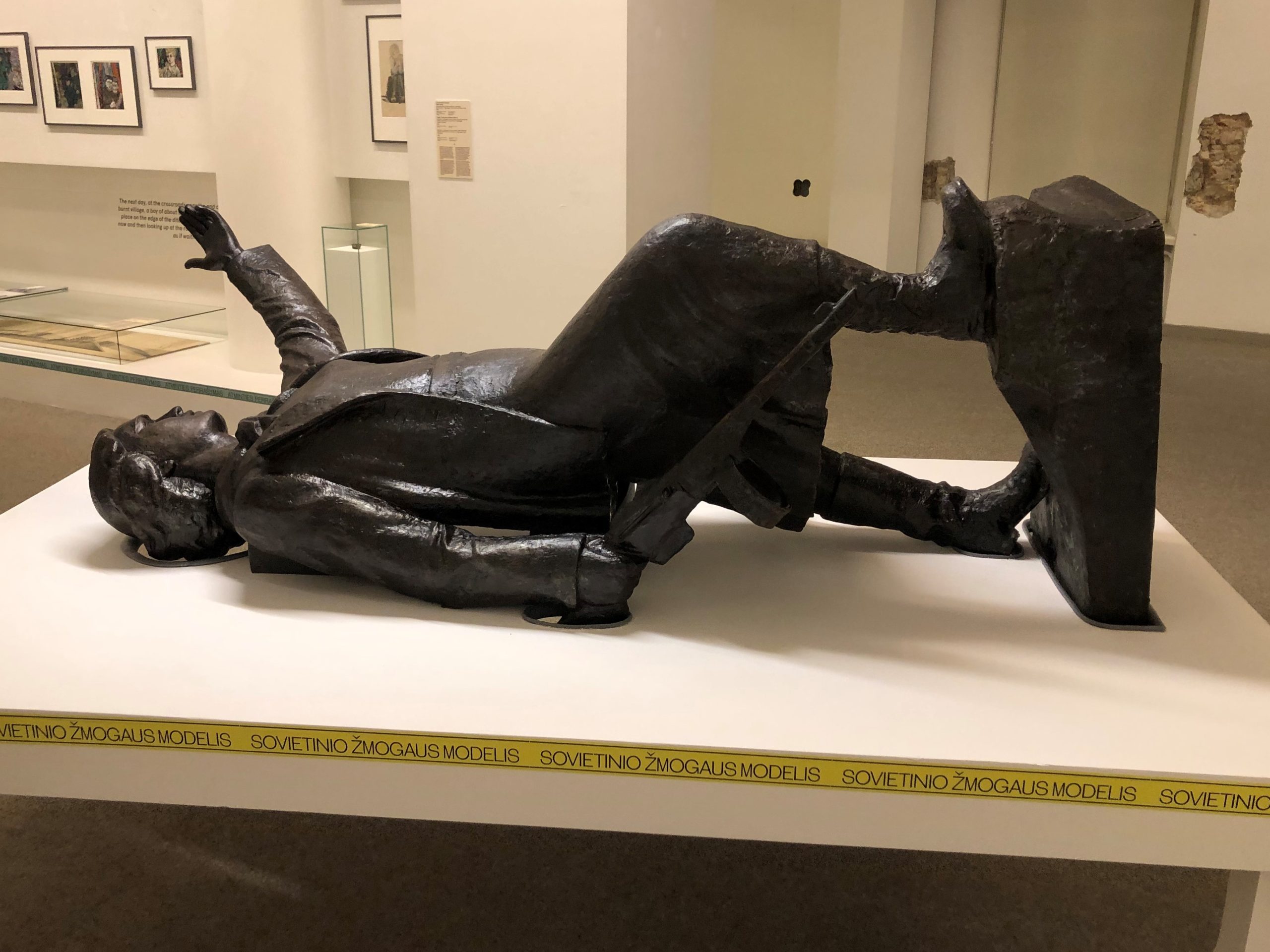“Ukraine war prompts Baltic States to remove Soviet memorials” – this is one of many similar headlines one stumbles upon when following the news about memory culture in the Baltics these days. While the toppling of Soviet monuments is a quite familiar sight in the region and reminds us of the early years of independence following the collapse of the Soviet Union, it seems as if the post-communist turn of the early 1990s has gained new momentum. Dealing with left-over traces that were not addressed in this first wave of de-Sovietization is once again at the center of attention, as part of a general process of reconsidering memory culture regarding Soviet history that was brought on by Russia’s war against Ukraine.
The toppling of monuments, and even the removal of plaques and changing names of public institutions – such as the former Russian Drama Theatre, whose name has recently been changed to Old Theatre of Vilnius – are more visible indicators for this apparent shift in memory culture. Another sphere where this process of change can be observed is the museum space, in which some of this difficult heritage is displayed to engage in new discussions about its commemoration. An example is the tipped-over model of a statue of the partisan fighter Marytė Melnikaitė, who was shot by Nazi Germans and venerated as a hero in Soviet Lithuania, which could be seen in the exhibition Unresolved Composition at the National Museum of Lithuania in Vilnius – not necessarily calling into question the depicted person, but rather the propagandistic narratives of the Soviet regime that glorified and propagated her figure as a role model of the ideal Soviet citizen.

The tipped-over statue of Marytė Melnikaitė in the exhibition Unresolved Composition. The tape reads: "a model of the Soviet person". Photo by Lea Garcia.
In Lithuania’s capital Vilnius, a number of exhibitions, recently or currently on display, have chosen the Soviet period as a historical frame. What’s interesting is that these exhibitions make references to the geopolitical events of the present in their introductory texts, and even use them as an argument to stress why it is important to look at the past and reconsider it right now. In line with this momentum, the National Museum of Lithuania writes in the promotion of its exhibition Unresolved Composition. The Second World War in Soviet Lithuanian Art:
The Kremlin’s attempts to destroy Ukraine oblige us to look back at the painful experience of the occupations and to rethink the imperial narratives that were introduced in the Soviet-occupied territories after World War II.
So, what is communicated to the visitors is that, because the circumstances in the present have changed, the established memory culture no longer suits the needs of society and therefore has to be reevaluated. While the critical examination of Soviet heritage is certainly not new, the war in Ukraine seems to have facilitated a turning point in memory culture that intensifies existing practices and evokes concrete calls for action to take another look at history.
Which narratives are produced through this process of re-evaluation in light of the present? How is the Soviet past narrated in exhibitions that deem themselves part of this process? The results of this change in memory culture in the museum sphere are the focus of my research project. In this context, museums can be seen as cultural objectivations that simultaneously engage with and contribute to a society’s memory culture and make it accessible to the general public through their exhibitions. The cultural studies and museum scholar Katrin Pieper defines the museum as an “indicator and generator, as a resonance space of memory culture”. Building on the work of Jan and Aleida Assmann and their concept of cultural memory, she argues that “as a site of representation and identity it is the cultural objectivation of cultural memory par excellence and hereby an essential figure of memory, that allows for the observation and analysis of a society’s cultural memory”.
The representations of the past and the narratives produced to form these are not uniform. Differences between exhibitions addressing the same historical period highlight the process of negotiation to which memory culture is subjected. To approach this dynamic and its diverse character, the people behind these narratives must be brought into the equation. The curators who produce the narratives embedded in the museum exhibitions, and their perspectives, are crucial to understanding how representations of memory culture are formed. So, while museum exhibitions provide a promising space for observation to identify the narratives that constitute the ongoing process of change, the museum staff and their positions are central to contextualize the latter and to comprehend the backdrop against which the narratives are to be understood. They are the actors that are shaping and negotiating the ongoing change of memory culture in the Lithuanian museum sphere that this project seeks to examine.
